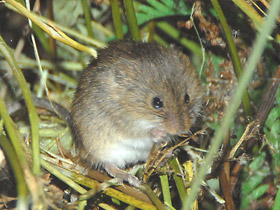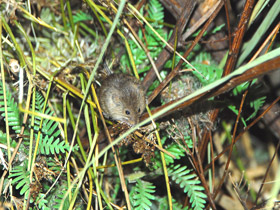The harvest mouse (Micromys minutus)
Harvest mouse видео
The harvest mouse (Micromys minutus) is a small rodent native to Europe and Asia. It is typically found in fields of cereal crops, such as wheat and oats, in reed beds and in other tall ground vegetation, such as long grass and hedgerows. It has reddish-brown fur with white underparts and a naked, highly prehensile tail, which it uses for climbing. It is the smallest European rodent; an adult may weigh as little as 4 grams (0.14 oz). It eats chiefly seeds and insects, but also nectar and fruit. Breeding nests are spherical constructions carefully woven from grass and attached to stems well above the ground.
History
The genus Micromys most likely evolved in Asia and is closely related to the long-tailed climbing mouse (Vandeleuria) and the pencil-tailed tree mouse (Chiropodomys). Micromys first emerged in the fossil record in the late Pliocene, with Micromys minutus being recorded from the Early Pleistocene in Germany. They underwent a reduction in range during glacial periods, and were confined to areas in Europe that were free of ice. During the mid-Pleistocene, Micromys minutus specimens also lived in parts of Asia. This suggests that they spread towards Asia when the ice sheets started to melt. Other evidence suggests that Micromys minutus could have been introduced accidentally through agricultural activities during Neolithic times.
Appearance and features, lifestyle and habits
Micromys minutus is the smallest of the rodents and one of the smallest mammals on Earth: its body length is 5.5-7 cm and it weighs 7-10 g. The Micromys minutus has a very long, agile, grasping tail capable of wrapping itself around stems and thin twigs. Micromys minutus has a very long, agile, grasping tail, capable of wrapping itself around stems and thin twigs; its hind legs are also very tenacious. The most characteristic feature of this baby is its masterly climbing of plant stems in search of food - a variety of seeds. Pregnancy of Micromys minutus lasts 17-18 days, mice are born naked, blind and deaf, weighing about 1 g, but they grow and develop very quickly. On the 8th-10th day their eyes open, and by the 15th-16th day they leave the nest. The young of the first litter breed in the year of birth.
Predators
Their predators include domesticated cats, barn owls, tawny owls, long-eared owls, little owls, and kestrels.












































